People are more likely to use Gothic designs in their homes because they want a space that is unique and reflects their personality. The Gothic interior decorating style is a captivating and dramatic path to take.
Dark colors also complement this style effectively. Therefore, if you favor colors like blue or brown for your home interior design, this aesthetic is totally up to you. To give your space a sense of regality and flow, you can use exquisite wallpaper with repetitive and intricate images in rich, dark and bold colors.
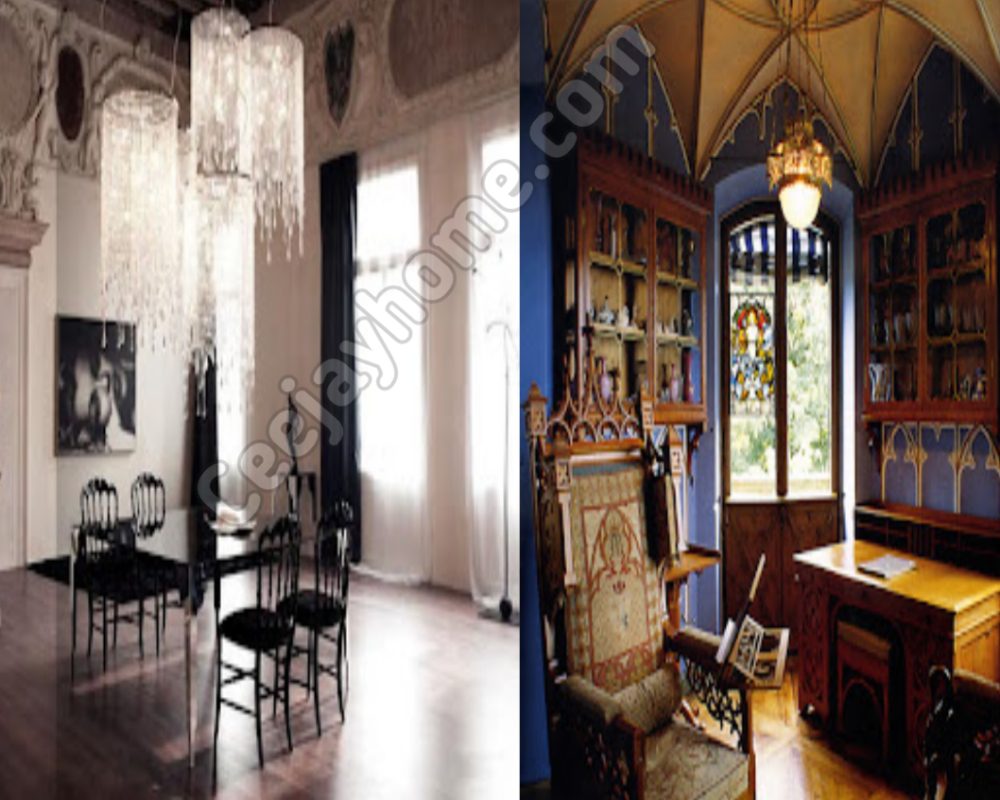
gothic-home-design-and-dining-room
However, avoid getting carried away with the Hollywood trip of a prison-like Gothic mansion, and use black or near-black shades cautiously. You can also surround the stained glass windows with a wrought iron fence, which gives the place an air of hidden beauty and exclusivity.
Table of Contents
House with a Gothic style design. How to make your room Gothic. Gothic style furniture and Kitchen
When it comes to creating a Gothic inspired interior, our personal taste and perspective play a significant role. The Gothic style has a distinct and unparalleled appeal.
This style embraces originality and uniqueness, often favoring dark colors such as black, purple or burgundy. Occasionally, lighter shades like light green, pink or white are also incorporated, albeit less frequently. It is essential to infuse the interior with authenticity, darkness and a touch of romance to truly capture the essence of Gothic culture.
Ideally, the Gothic style thrives in spacious apartments or country houses. While high ceilings are desirable, they are not an absolute requirement.
Choosing suitable materials for a Gothic home
Despite its ancient origins, the concept of the Gothic style remains relatively youthful. Common materials used include stone and roughly finished wood. However, it is worth noting that not many people opt for entirely natural materials these days. Constructing an entire medieval castle would be impractical in the modern era.When you choose the right materials, the outcome will be truly exceptional.
The Gothic style is perfect for creating a medieval ambiance, especially when it comes to using lamps. Due to relatively low demand, these lamps are often produced in limited quantities or even as unique pieces. This provides an opportunity to design a personalized interior that highlights individuality and originality. Moreover, just because a lamp is designed for a Gothic style apartment doesn’t mean it cannot be used in other interior styles. In such cases, individual approaches are usually considered.
Lighting plays a vital role in enhancing the overall atmosphere, along with backlighting and special effects that add a touch of mystery and intrigue associated with the Gothic style. These lamps have the ability to create a cozy and comfortable environment.
Window and arch decorations
You may have come across various images showcasing the Gothic style interiors where the windows and arches distinctly ascend upwards. For decoration, intricate towers and characteristic Gothic ornaments can be used. It’s important not to mix this style with others as it exudes a majestic and elegant ambiance. The windows are adorned with beautiful ornaments and stained glass, making them the center of attention. It’s crucial to ensure that the architectural style of the Middle Ages is faithfully represented in the interior, even when using modern materials and objects.
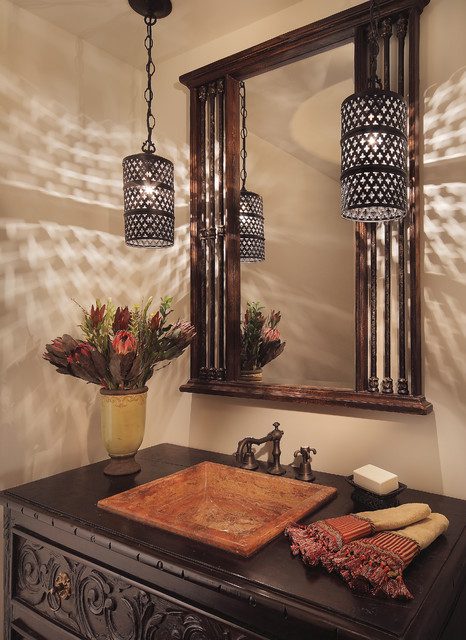
mediterranean-gothic-room-furniture-design
Careful consideration should be given to selecting furniture that complements the overall aesthetic. A tall legged sideboard, a double leaf cabinet with six panels and high backed chairs would be fitting choices. All furniture should be crafted from natural wood and adorned with intricate sculptures. Additionally, the furniture should have a sense of solidity and elegance, even if it embraces a somewhat rustic feel.
Let’s not forget about the ceiling. The Gothic style places emphasis on verticality, so ideally, this should be taken into account during the initial design phase. However, if the building is already constructed with lower ceilings, creative techniques such as decorative plasterwork and exposed rafters can visually contribute to heightening the space.
Gothic housing decor
To achieve this, you can incorporate mythical sculptures, lion motifs, various drapery types, paintings and knightly armor into your home decor.
Despite the perception of Gothic style as retro, it actually falls under the category of modern design. The intentionally aged and weathered appearance is created purposefully. Additionally, it’s important for Gothic enthusiasts to consider various nuances when designing an interior in this style.
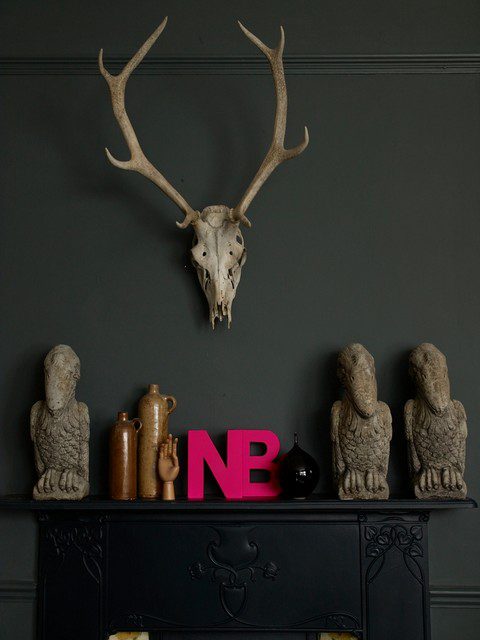
gothic-wall-design
The pinnacle of Gothic style was during the 12th to 15th centuries and examples of original Gothic architecture can still be found in many countries, particularly in Western Europe. In contrast to the earlier Romanesque style, Gothic is characterized by its elegance, upward emphasis, spaciousness, rich color palette, elaborate window and vault designs, as well as intricate patterns and stained glass windows that create a unique lighting effect in a room. Despite being a complex and occasionally enigmatic style that evokes a mystical atmosphere, Gothic experienced a resurgence in the 19th and 20th centuries. Even today, many people aspire to recreate the austerity and opulence of Gothic style within their homes interiors.
Modern Gothic style furniture
Typical furniture in the Gothic style is usually crafted from sturdy wood and features wrought iron accents or vibrant carvings. A prime example would be a grand canopy bed adorned with rich drapes and curtains. To complement such a room, one might consider incorporating various wooden tables, wicker pieces with marble finishes, mirrors in ornate frames and cabinets with intricate designs and elevated legs.
In the past, Gothic inspired living rooms often boasted round tables with intricately carved legs, imposing chairs resembling thrones and substantial wooden furniture sets. One essential element of a Gothic style living room was a sizable centerpiece, featuring a wooden frame adorned with Celtic symbols or Gothic motifs. While not everyone opts for such furniture today, if one desires to infuse their living room with a Gothic ambiance, certain elements described here may still find their place.
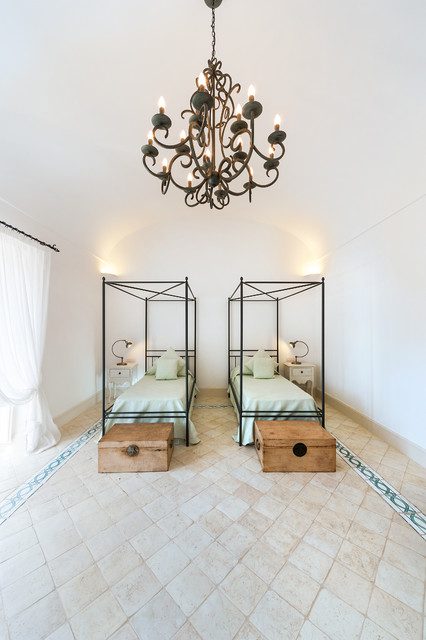
simple-neo-gothic-room-design
Gothic house kitchen design
Designing your gothic house kitchen can be a fun and creative project. There are many ways to achieve a gothic look, depending on your personal style and preferences. Here are some tips and ideas to help you:
- Choose a color scheme that suits your gothic mood. You can go for classic black and white, or add some pops of color like red, purple, burgundy, or green. You can also use metallic accents like gold, silver, or copper to add some shine and contrast.
- Select furniture and appliances that match your gothic kitchen theme. You can opt for antique or vintage pieces, or modern and sleek ones with gothic details. For example, you can have a white table with unique legs, black chairs and armchairs, black crystal chandeliers over the table, or a black paneled kitchen with a print tile kitchen island, a large black crystal chandelier and a white table and chairs.
- Add some gothic accessories and decorations to complete the look. You can use candles, mirrors, artworks, sculptures, skulls, crosses, or anything else that appeals to your gothic taste. You can also use fabrics like velvet, lace, or silk to create a cozy and luxurious atmosphere.
Be creative and have fun with your gothic kitchen design. You can mix and match different styles and elements to create your own unique gothic space.
Some gothic utensils are:
Black cookers: with stone or metal backsplashes and built-in hoods. These can create a dramatic focal point in your gothic kitchen and add some contrast to the dark walls and cabinets.
Crystal chandeliers: or pendant lights with gothic details. These can add some sparkle and elegance to your gothic kitchen and dining room, as well as provide some ambient lighting.
knife holders or racks: These can be shaped like coffins, skulls, crosses, or other gothic symbols, and can store your knives in a stylish and spooky way.
Cutting boards or trivets: These can feature gothic designs like skulls, bats, spiders, or medusas, and can protect your countertops from heat and scratches.
Oven mitts or potholders: These can have gothic prints or patterns like spiderwebs, bats, moons, or nevermore, and can keep your hands safe from hot pots and pans.
Gothic spatulas or spoons: These can have gothic shapes or designs like skulls, bats, spiders, or clowns, and can be used for stirring, flipping, or serving food.
Cookie cutters or molds: These can have gothic letters or symbols like pentagrams, crosses, or coffins, and can be used for making cookies, cakes, or chocolates.
Gothic herb or dry goods scoops: These can have gothic handles or motifs like brains, spines, or skeletons, and can be used for measuring or dispensing herbs, spices, or grains.
Utensil holders or pots: These can have gothic shapes or patterns like skulls, spiderwebs, or coffins, and can be used for storing your gothic utensils in a stylish and spooky way.
Steel cookware: These are non-stick cookware made with ceramic and titanium that can withstand high temperatures and resist scratches. They are not explicitly gothic, but they have a sleek and dark appearance that can suit your gothic kitchen theme.
Mandatory details an characteristics of the Gothic style
To achieve a harmonious and convincing Gothic look in a modern interior, it’s important to have ample space. In smaller standard rooms with low ceilings, it can be challenging to fully showcase the intricate details of this style, resulting in a cluttered and overwhelming interior.
The core elements of Gothic design feature clean, vertical lines. Traditionally, Gothic architecture includes tall arched windows with pointed arches. While it may not be feasible to replicate such architectural details in urban apartments, they can certainly add a touch of charm to a country house.
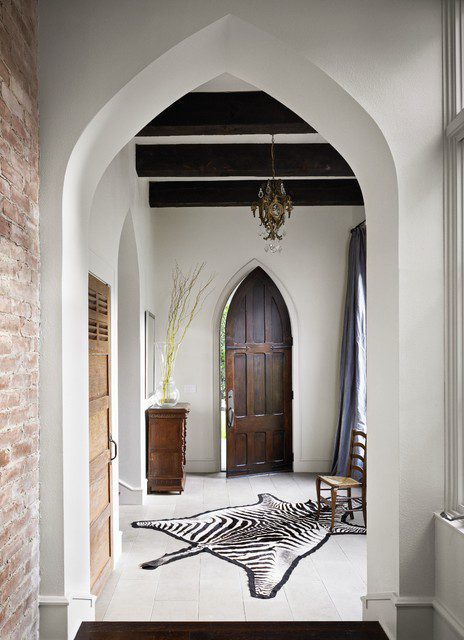
gothic-house-door-entrance-design
Throughout history, the Gothic style has been known for its vibrant stained glass embellishments, which not only adorned the exteriors of buildings but also provided unique lighting effects inside. In contemporary interpretations, these beautiful features can be seen not only on window facades but also incorporated into interior openings, cabinets or sideboard doors. As creating authentic stained glass can be labor intensive and expensive, an alternative option is to use stained glass film that mimics the original designs.
When it comes to interior decoration, windows were often adorned with thick curtains, draped on wrought iron cornices to add a touch of elegance and weightiness. If you want to recreate the Gothic style in a country house, you can use wooden shutters to adorn the windows. One notable feature of Gothic design is the emphasis on natural materials. You won’t find any plastic or modern objects as decorative elements in this style. Instead, it heavily relies on natural elements like wood, stone, marble and metal.
During the peak of the Gothic era, wood and stone sculptures gained immense popularity. Skilled craftsmen adorned the interiors with various characteristic motifs and depictions of stories. For instance, it was common to paint scenes depicting knights and princesses on the walls, while furniture would be decorated with intricate patterns and “Gothic roses”. Circular designs with a flower at the center. To accentuate the noble status of the owners, sculptures and paintings were often adorned with gilding’s the status of noble owners, sculptures and paintings were often covered with gilding.
Gothic home style colors
All interior design styles have their own unique color palette. In the case of Gothic style, you will find a rich range of colors like blue black, purple, cherry, dark blue, gray, ruby and scarlet. To ensure that this combination of shades doesn’t appear overly dark, modern interpretations often incorporate white or milky tones as the primary color. When the darker hues are used in furniture or wall decorations, they are frequently adorned with elegant gold or silver motifs.